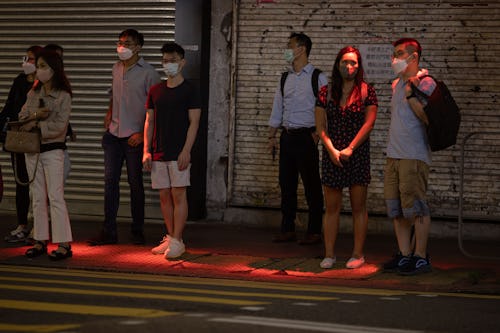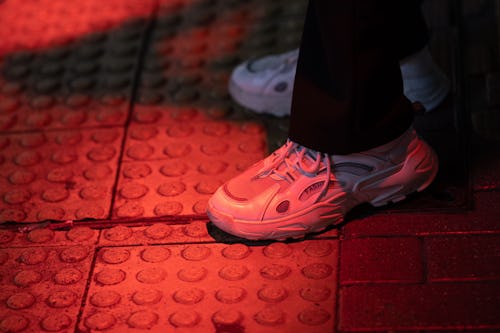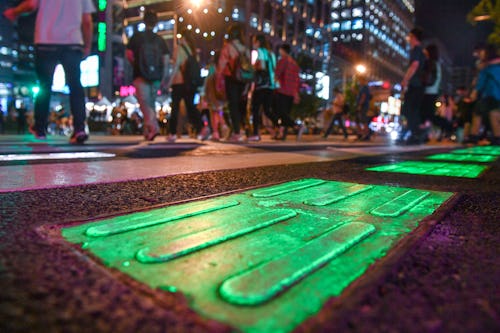
Many of us are guilty of being glued to our phones in moments when we definitely shouldn’t be, including while driving or walking. Apparently, not looking out for incoming traffic while crossing busy intersections is also a pretty big problem in densely-populated Hong Kong — and the government there is testing out a method that could save distracted people’s lives.
This month, the Hong Kong Transport Department installed overhead lamps at the edge of some crosswalks that project red or green lights on the ground (and on the people standing there) in coordination with pedestrian traffic lights, NBC News reported. This for the type of citizen who is so hopelessly lost in their phone that they can’t be bothered to look up. As of now, the devices are in the testing phase, but if they’re deemed effective after six months, the program will be expanded and continued.

Hong Kong recorded seven pedestrian deaths so far this year, per NBC, which the Transport Department partially attributed to growing cell phone use. Even though the pedestrian death toll there is high, it’s still nothing compared to cities like New York City, where 29 pedestrians were killed in just the first three months of 2022, according to the non-profit organization Transportation Alternatives. Something like this could definitely be useful in the U.S., where I’ve seen at least one person walk into oncoming traffic while scrolling through TikTok.
Other cities have implemented similar technologies, like Beijing’s smart crosswalks that light up for people who tend to cross the street with their heads down (although in that instance, they’re also being used for surveillance, per the Global Times).

While it may be tempting to make a case for natural selection and shame people who won’t get off their phones long enough to cross a street, the reality is our phones are designed to have us in an addictive chokehold, as Vox reported in 2018 — and they’re probably only going to get worse. It’s actually kind of scary to think that phones may be affecting the fundamental way our brains work — and now it looks like we’re at that point in late-stage capitalism where we have to literally change cities’ infrastructure to accommodate our addictions to technology.







